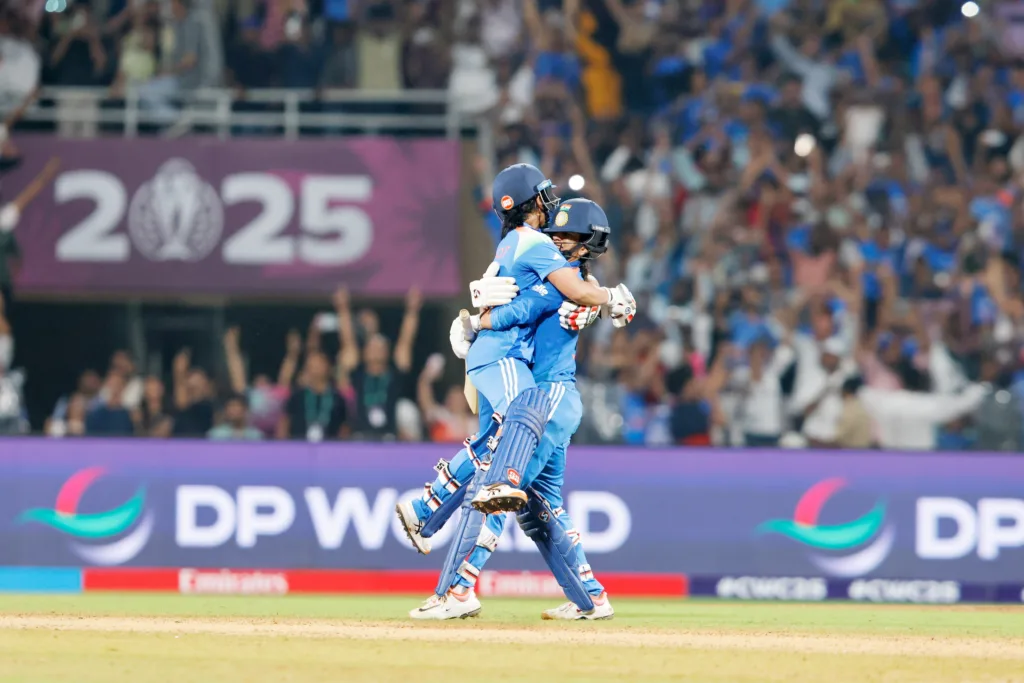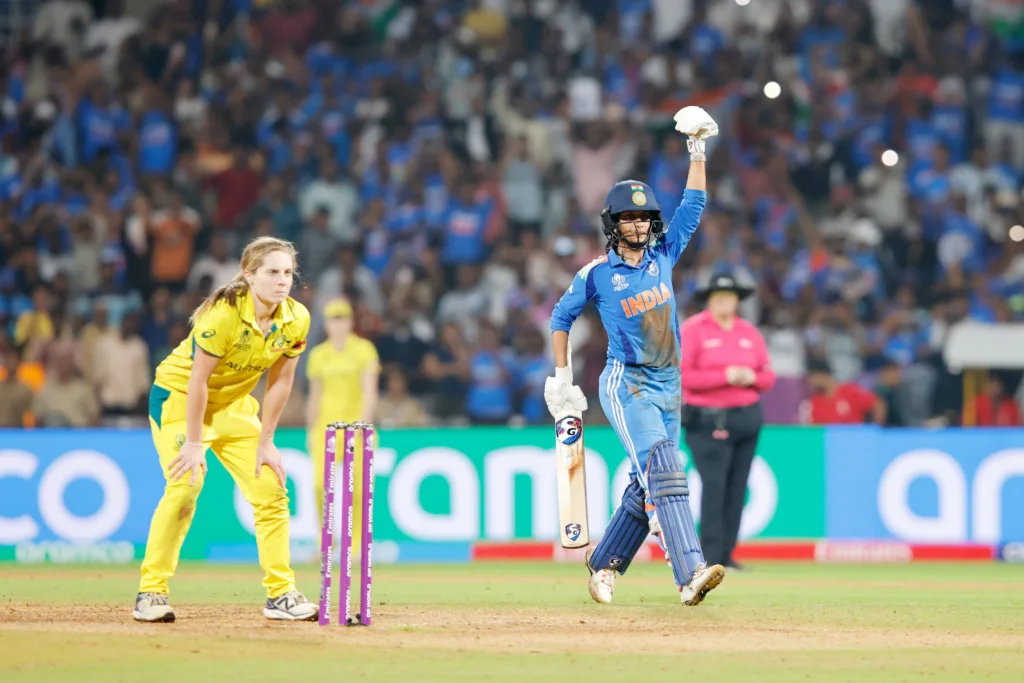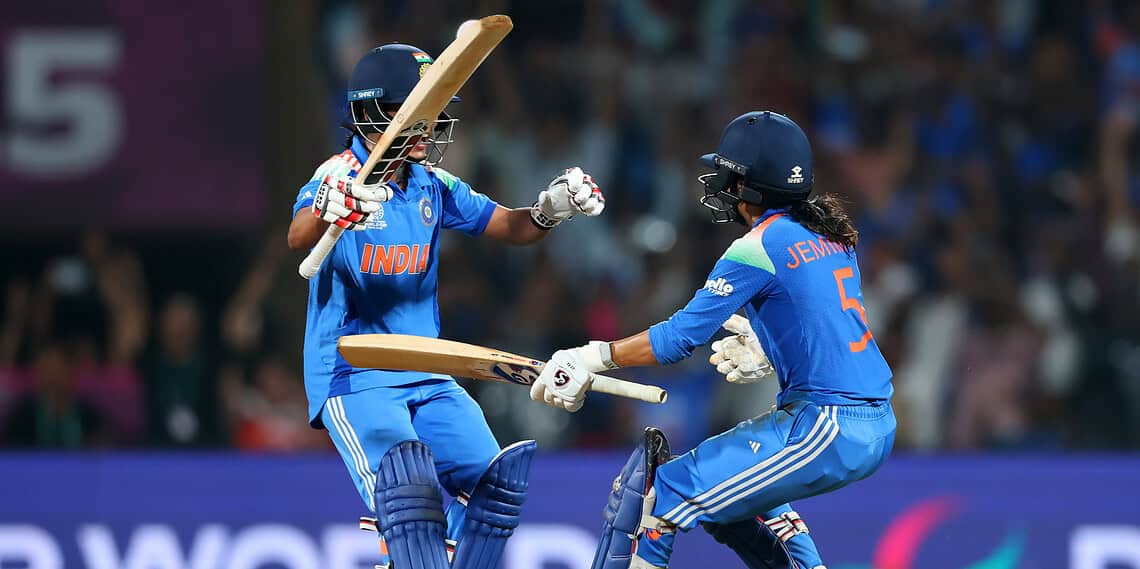The art of chasing in cricket is as much about psychology as it is about skill. When India vs Australia unfolded at the DY Patil Stadium, what followed was a masterclass in mental fortitude, tactical intelligence, and keeping composure when everything seemed to be slipping away. This wasn’t just any chase—it was the greatest chase that showcased how the India Women team transformed from chokers to champions in the space of 50 overs.
Table of Contents
The Mental Demons That Haunted the Chase
Every great chase begins in the mind, and for India Women, the psychological baggage was immense. The ghosts of Indore—where they had snatched defeat from the jaws of victory against England—lurked in every delivery. An equation of 36 off 30 had become 14 off the final over, and they had lost by four runs. That failure had become the defining narrative of their knockout cricket.
As the India vs Australia chase progressed, these demons threatened to resurface. When the required rate climbed, when wickets fell at crucial moments, when Australia’s experienced bowling unit tightened the screws—every moment tested India’s mental resolve. The question wasn’t just whether they could score the runs, but whether they could keep their cool when the pressure mounted.
| Pressure Points in the Chase | Situation | India’s Response | Mental Approach |
|---|---|---|---|
| Early wicket | 10 balls, 1 down | Rodrigues promoted | Adaptation over panic |
| Mandhana’s dismissal | Building pressure | Calm assessment | Trust in partnership |
| Ghosh’s departure | 29 off 24 balls | Strategic thinking | Learning from past failures |
The Conversation That Changed Everything
The most revealing moment in this greatest chase came not from a boundary or a wicket, but from a simple conversation between Jemimah Rodrigues and Amanjot Kaur. As Amanjot walked to the crease with India needing 7.25 per over, her first question was tactical: “Should I charge at the bowlers or will you do so?“

Rodrigues’ response revealed the maturity that separated this chase from previous failures: “We are good runners. Hum nikaal lenge (we will get us home). You see the ball, the track is nice, and we should do it. We should finish it with one over to spare.”
This wasn’t bravado—it was calculated confidence. Instead of relying on power hitting or desperate measures, they chose to trust their skills, their running between wickets, and their game awareness. In that moment, they chose composure over chaos.
Staying Cool When Australia Turned the Screws
The greatest test of India’s newfound mental strength came when Australia sensed opportunity. At 29 off 24 balls, with Richa Ghosh departing and Annabel Sutherland running in for her penultimate over, the India vs Australia contest hung in the balance. This was the moment when previous Indian teams had crumbled.
Sutherland, who “can do anything,” conceded just five runs in that crucial over while removing Ghosh. The equation became 29 off 24—eerily similar to the England disaster. The stadium fell silent. Even the usually raucous Bucket Hat Cult was muted. The pressure was suffocating.
But something had changed in this India Women team. Instead of panic, there was calculation. Instead of desperate hitting, there was strategic thinking. Amanjot later revealed: “I had the England game in my mind where I took the game deep but we were left needing 12 [14], which was too much. I did not want a repeat.”
The Art of Pressure Management
What made this the greatest chase wasn’t just the target or the opposition—it was how India Women managed the escalating pressure. Every delivery in the final overs carried the weight of history, expectation, and opportunity. The smallest mistake could have cost them the World Cup final.
When Amanjot pulled away from Sutherland’s delivery, forcing the Australian pace to abort her run-up, it wasn’t gamesmanship—it was pressure management. She was taking control of the moment rather than being controlled by it. The crowd’s chant that followed showed they understood: this was their team refusing to be rushed into mistakes.
Rodrigues’ Mental Mastery Under Fire
Jemimah Rodrigues’ contribution to the greatest chase extended far beyond her maiden World Cup century. Her mental approach during the death overs revealed a player who had learned to thrive under pressure rather than merely survive it.

When Sutherland’s slower ball arrived in the 48th over, Rodrigues was early—a mistake that often leads to dismissal. But instead of panic, she showed patience. She waited, adjusted, and scooped the ball past the wicketkeeper. Then came the defining moment: after another wide, she hung back to a length ball and slashed it past backward point.
These weren’t just shots—they were statements of intent. Under pressure, when the India vs Australia chase hung in the balance, Rodrigues chose innovation over safety, skill over fear.
The Tactical Brilliance of Staying Calm
| Critical Over | Required | Achieved | Key Decision |
|---|---|---|---|
| 48th (Sutherland) | Pressure release | 15 runs | Innovation over power |
| 49th (Australia) | 8 off 12 | 8 off 9 | Timing over panic |
| 50th | Victory | Complete | Confidence over doubt |
The tactical decisions made during the greatest chase revealed how India Women had evolved their thinking. Rather than attempting to finish the game with massive hits, they identified that 15 runs from Sutherland’s over would make the equation manageable. When they achieved exactly that, the chase was effectively over.
This tactical awareness—knowing when to attack, when to accumulate, and when to take calculated risks—demonstrated a team that had learned to think clearly under the most intense pressure.
Breaking the Knockout Curse Through Mental Strength
The India vs Australia chase represented more than runs and balls—it was about overcoming a mental barrier that had defined Indian cricket for years. Australia weren’t just another team; they were the benchmark, the standard by which knockout success was measured. Repeatedly falling short against them had created a psychological complex.
The way India Women approached this chase showed they had flipped the script. Instead of being burdened by past failures, they were energized by the opportunity to rewrite history. The pressure that had once paralyzed them became the fuel that drove them forward.
The Moment Pressure Transformed Into Joy
As Amanjot’s final boundary raced away and the DY Patil Stadium erupted, something profound had happened. The India Women team had achieved the greatest chase not just through skill, but through an evolution in their relationship with pressure. They had learned to stay cool when everything around them was burning.
Jemimah Rodrigues’ tears, Amanjot’s celebration, and the team’s embrace in the middle captured more than victory—they captured transformation. A team that had been defined by their failures under pressure had rewritten their identity through the greatest chase in their history.
Lessons from the Greatest Chase
This India vs Australia encounter will be studied not just for its result, but for its demonstration of how teams can evolve mentally. The greatest chase showed that success under pressure isn’t about eliminating nerves—it’s about managing them, channeling them, and staying true to your plans when everything is on the line.
The conversation between Rodrigues and Amanjot, the tactical adjustments under pressure, and the refusal to panic when Australia fought back—these elements combined to create a template for success that extends far beyond this single match.
Cool Heads Prevail in the Greatest Chase
In achieving the greatest chase in Women’s World Cup history, India Women proved that cricket’s most challenging skill isn’t technical—it’s mental. The ability to keep cool amid the drama, to think clearly when pressure mounts, and to trust your skills when everything is at stake.

This India vs Australia thriller will be remembered as the greatest chase because it demonstrated the evolution of a team’s character. They didn’t just score 339 runs—they conquered their fears, overcame their history, and proved that with the right mindset, even the greatest challenges become achievable.
FAQs
What was the target in the India vs Australia World Cup semi-final?
In the India vs Australia semi-final, the India Women team successfully chased 339 runs to reach the World Cup final, with the victory sealed with 6 balls to spare.
Who scored the century for India Women vs Australia?
Jemimah Rodrigues scored her maiden World Cup century in the India vs Australia chase, providing the foundation for India’s historic victory.
How many people attended the India vs Australia match?
The India vs Australia semi-final at DY Patil Stadium in Navi Mumbai was attended by 34,651 spectators, creating an electric atmosphere.
What was significant about India Women’s victory over Australia?
This India vs Australia victory marked the first time the India Women team had beaten Australia in a knockout stage of an ICC tournament, breaking a psychological barrier.
Who hit the winning runs in India vs Australia?
Amanjot Kaur hit the winning boundary in the India vs Australia chase, with her celebration and Rodrigues’ emotional reaction becoming iconic moments of the victory.








